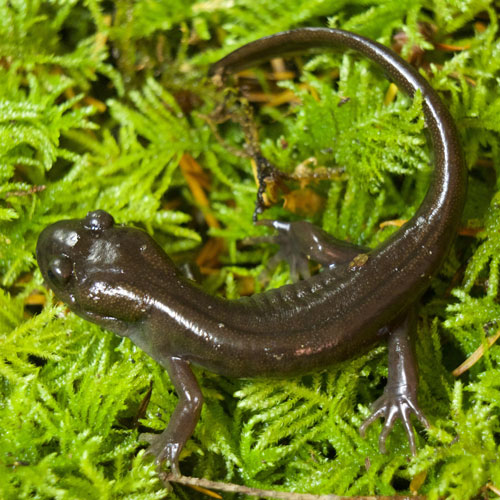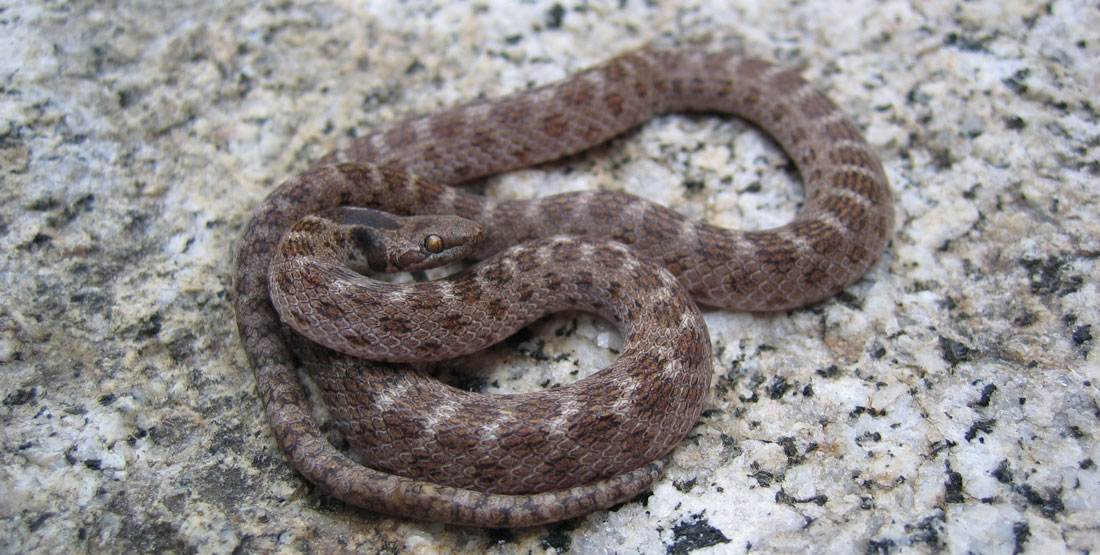Fast Facts
Where they live
- View a map of where they live.
- Can be found in southern British Columbia, western United States, Texas, and some parts of Mexico.
- They can adapt to many environments, including rocky grassland areas, chaparral, woodlands, desert scrub, thorn scrub, and moist mountain meadows.
- They often hide under plant debris or rocks.
What they eat
- Lizards and frogs are the majority of the night snake’s diet.
- Salamanders, small snakes, and small mice can also be eaten.
- Like their name suggests, desert nightsnakes hunt during the night.
- They use their mild venom to help subdue prey.
Breeding
- Sometime between April and July, females search for rock crevices or abandoned mammal burrows to lay their eggs.
- They lay 3 to 9 eggs, which will hatch about 7 to 8 weeks later.
Cool Biology Facts
- Desert nightsnakes are often mistaken for looking like rattlesnakes. However, unlike rattlesnakes, night snakes do not have a rattle on the end of their tail and their venom is harmless to humans.
- A southwestern Idaho study found that female desert nightsnakes are 50% longer than males and have triple the body mass!
Threats
- Desert nightsnakes are considered “least concern” because they have large and stable populations in the vast majority of their range.
- View their status on the IUCN Red List of Threatened Species.

Amphibians & Reptiles of Washington
Do you know where rattlesnakes live in our state? Or which salamander breathes through its skin? Explore the fascinating diversity of the 26 species of amphibians and 28 reptiles found in Washington state.

